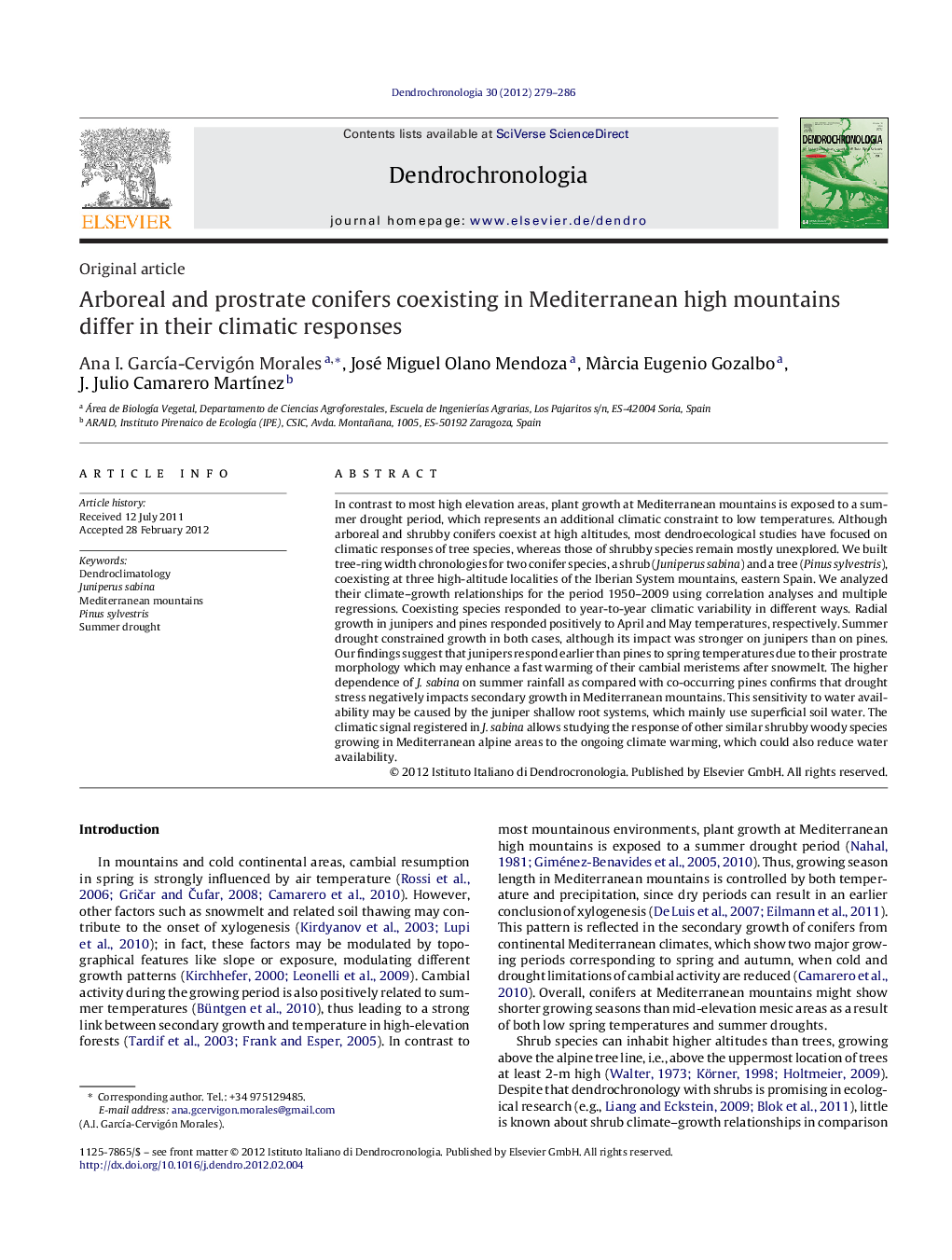| Article ID | Journal | Published Year | Pages | File Type |
|---|---|---|---|---|
| 85671 | Dendrochronologia | 2012 | 8 Pages |
In contrast to most high elevation areas, plant growth at Mediterranean mountains is exposed to a summer drought period, which represents an additional climatic constraint to low temperatures. Although arboreal and shrubby conifers coexist at high altitudes, most dendroecological studies have focused on climatic responses of tree species, whereas those of shrubby species remain mostly unexplored. We built tree-ring width chronologies for two conifer species, a shrub (Juniperus sabina) and a tree (Pinus sylvestris), coexisting at three high-altitude localities of the Iberian System mountains, eastern Spain. We analyzed their climate–growth relationships for the period 1950–2009 using correlation analyses and multiple regressions. Coexisting species responded to year-to-year climatic variability in different ways. Radial growth in junipers and pines responded positively to April and May temperatures, respectively. Summer drought constrained growth in both cases, although its impact was stronger on junipers than on pines. Our findings suggest that junipers respond earlier than pines to spring temperatures due to their prostrate morphology which may enhance a fast warming of their cambial meristems after snowmelt. The higher dependence of J. sabina on summer rainfall as compared with co-occurring pines confirms that drought stress negatively impacts secondary growth in Mediterranean mountains. This sensitivity to water availability may be caused by the juniper shallow root systems, which mainly use superficial soil water. The climatic signal registered in J. sabina allows studying the response of other similar shrubby woody species growing in Mediterranean alpine areas to the ongoing climate warming, which could also reduce water availability.
